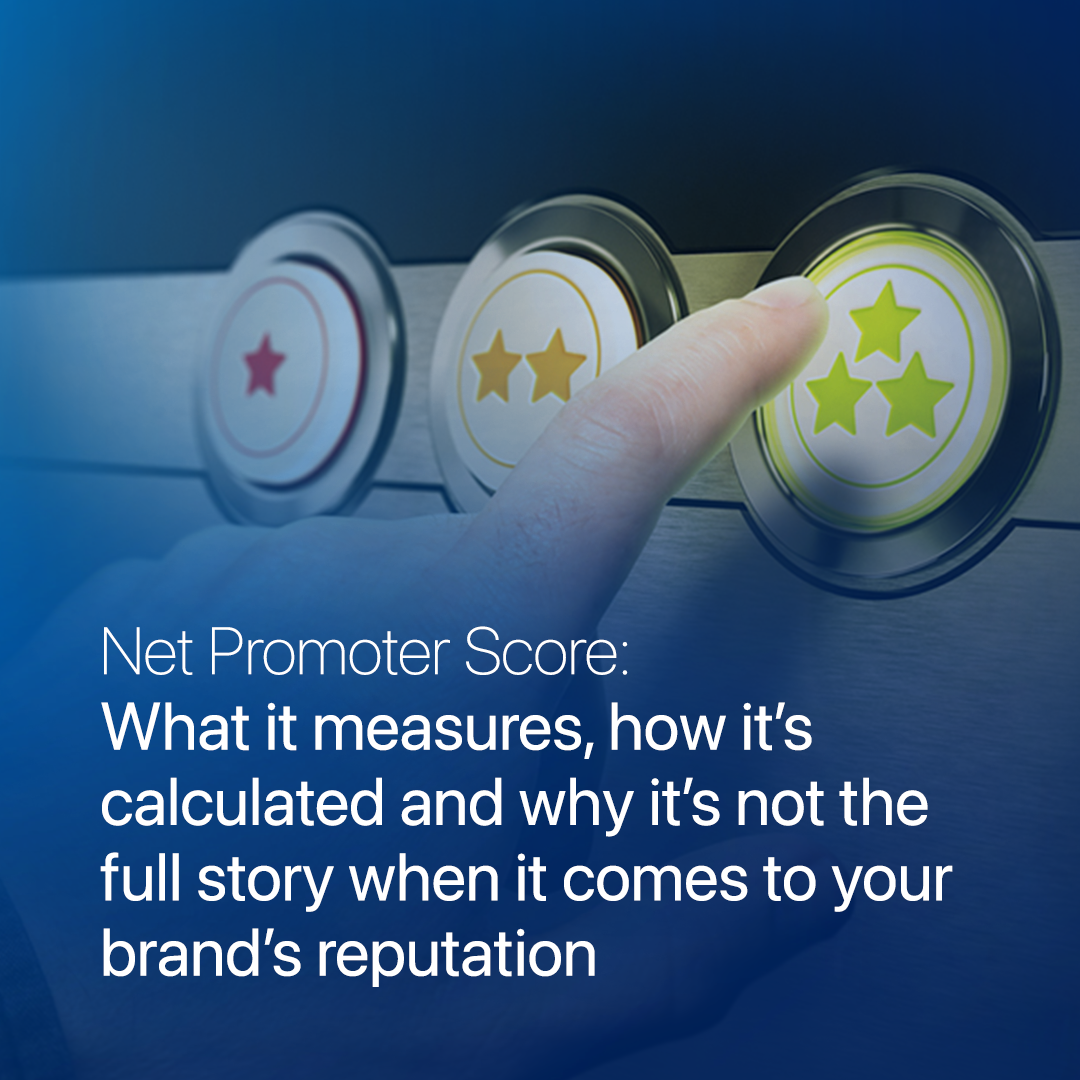It has been nearly 20 years since Fred Reichheld, founder of Bain & Company, introduced Net Promoter Scores (NPS) to the world. At the time, it was a revolutionary method to measure customer experience and set a standard in brand reputation management. But, a lot has changed since 2003 — in fact, a whole lot changed in 2020, requiring brands to rethink their entire customer journey and every customer experience it delivered.
With consumer behaviors constantly evolving online, enterprise organizations need more than a NPS when it comes to managing brand reputation. They need sophisticated platforms that not only measure, but improve customer experience management. For years, NPS was considered a key brand performance indicator that could predict growth, but enterprise organizations need platforms that can drive growth.
“NPS isn’t intended to measure individual interactions or experiences,” writes Experience.com CEO Scott Harris in his book Create Wow Customer Experiences, “The magic happens when survey questions are specifically about a client’s interaction with an individual employee, and the responses are put into motion to drive improvement in real-time.”
“The magic happens when survey questions are specifically about a client’s interaction with an individual employee, and the responses are put into motion to drive improvement in real-time.”
To better understand NPS and its place within the customer experience industry, it helps to have some background on exactly what it measures, how it’s calculated and the difference between “promoters” and “detractors” as defined by Reichheld.
What does NPS measure and how is it calculated?
First launched in 2003, a NPS is used to gauge brand loyalty by measuring how well an organization treats its customers. Determined by data supplied by Satmetrix, a co-developer of NPS with Bain & Company, the score is based on a single question directed at customers: “How likely are you to recommend us to a friend or colleague?”
The NPS question is commonly known as the “likely to refer” question, with customers asked to leave a score between 0 to 10 rating how likely they are to recommend the business. While aggregate scores determine NPS, individuals who leave a score are categorized into three separate categories: Detractors, passives and promoters.
Detractors: Customers who leave a score between 0 – 6 are defined as detractors. These are customers who will not only abstain from referring a business to friends, family and colleagues, but are likely to do just the opposite and share a bad experience with others, potentially causing damage to the business’ reputation.
Passives: Customers who leave a score of 7 or 8 are defined as passives. These are neutral customers who will not likely share any bad experiences, but also won’t necessarily refer the business to friends, family or colleagues. While they are not likely to harm the business, they are also not active brand advocates.
Promoters: Customers who leave a score of 9 or 10 are defined as promoters. These are the dream customers who can serve as a powerful asset to the business. Not only do they help drive higher net promoter scores, they are most likely to recommend a business to other potential buyers.
The actual net promoter score is calculated by taking the percentage of promoters and subtracting the percentage of detractors. Passive scores are not used to calculate NPS as they will not influence future customers.
A net promoter score ranges between -100 and 100, with a positive score reflecting the fact that a business has more customers willing to represent it versus sharing a bad experience. (A negative score shows the opposite.) Any score above 0 is considered good. Businesses that garner an NPS of 50+ are deemed excellent.
Download Experience.com’s white paper: “5 Steps to Provide an Exceptional Customer Experience”
Good NPS vs Poor NPS: How to maximize promoters and manage detractors
NPS does offer valuable insight, but it’s one-dimensional. One way to leverage NPS is by integrating the data into your CX strategy so that you can analyze the full data and automate review requests. An Experience Management Platform that allows you to immediately flag detractors so that you can manage their bad experience, while shining a light on your promoters, enables you to operationalize NPS data that once upon a time was simply a number at the top of your Net Promoter Scorecard.
“NPS is designed to measure a customer’s overall loyalty to the brand regarding repeat purchases and referrals, not a customer’s satisfaction with a specific interaction,” writes Harris, “For executives in the experience space, we are mapping journeys and interactions within journeys. We are searching for meaningful improvement as we go. The interactions are where we see the biggest lift in business outcomes.”
We’re not saying Net Promoter Scores should be retired, but they should not be the only way brands manage their reputation. By all means, keep NPS, but implement a CX platform that automates actionable insights into individual customer and employee experiences so that you can analyze and operationalize those experiences in real-time — creating impactful experiences that turn your top customers into your most valuable online marketing asset.
















